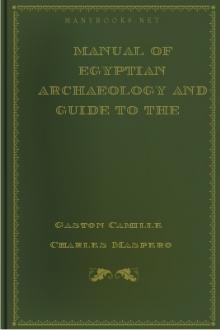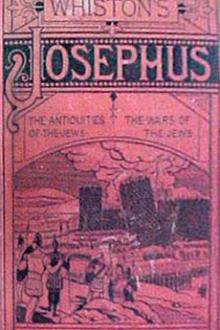Manual of Egyptian Archaeology and Guide to the Study of Antiquities in Egypt by Gaston Maspero (i have read the book txt) 📕

107. Wall-scene from temple of Denderah
108. Obelisk of Heliopolis, Twelfth Dynasty
109. Obelisk of Begig, Twelfth Dynasty
110. "Table of offerings" from Karnak
111. Limestone altar from Menshîyeh
112. Wooden naos, in Turin Museum
113. A mastaba
114. False door in mastaba
115. Plan of forecourt, mastaba of Kaäpir
116. Plan of forecourt, mastaba of Neferhotep
117. Door in mastaba façade
118. Portico and door of mastaba
119. Plan of chapel, mastaba of Khabiûsokari
120. Plan of chapel, mastaba of Ti
121. Plan of chapel, mastaba of Shepsesptah
122. Plan of chapel, mastaba of Affi
123. Plan of chapel, mastaba of Thenti
124. Plan of chapel, mastaba of Red Scribe
125. Plan of chapel, mastaba of Ptahhotep
126. Stela in mastaba of Merrûka
127. Wall-scene from mastaba of Ptahhotep
128. Wall-scene from mastaba of Ûrkhûû
129. Wall-scene from mastaba of Ptahhotep
130. Plan of serdab in mastaba at Gizeh
131. Plan of serdab and
Read free book «Manual of Egyptian Archaeology and Guide to the Study of Antiquities in Egypt by Gaston Maspero (i have read the book txt) 📕» - read online or download for free at americanlibrarybooks.com
- Author: Gaston Maspero
- Performer: -
Read book online «Manual of Egyptian Archaeology and Guide to the Study of Antiquities in Egypt by Gaston Maspero (i have read the book txt) 📕». Author - Gaston Maspero
Domestic utensils and small household instruments were mostly made in bronze. Fig 276.--Bronze jug. Fig 276.--Bronze jug.
Such objects are exhibited by thousands in our museums, and frequently figure in bas-reliefs and mural paintings. Art and trade were not incompatible in Egypt; and even the coppersmith sought to give elegance of form, and to add ornaments in a good style, to the humblest of his works. The saucepan in which the cook of Rameses III. concocted his masterpieces is supported on lions' feet. Here is a hot-water jug which looks as if it were precisely like its modern successors (fig. 276); but on a closer examination we shall find that the handle is a full-blown lotus, the petals, which are bent over at an angle to the stalk, resting against the edge of the neck (fig. 277). Fig 277.--Same jug seen from above. Fig 277.--Same jug seen from above.
The handles of knives and spoons are almost always in the form of a duck's or goose's neck, slightly curved. The bowl is sometimes fashioned like an animal--as, for instance, a gazelle ready bound for the sacrifice (fig. 278). On the hilt of a sabre we find a little crouching jackal; and the larger limb of a pair of scissors in the Gizeh Museum is made in the likeness of an Asiatic captive, his arms tied behind his back. A lotus leaf forms the disk of a mirror, and its stem is the handle. One perfume box is a fish, another is a bird, another is a grotesque deity. The lustration vases, or situlae, carried by priests and priestesses for the purpose of sprinkling either the faithful, or the ground traversed by religious processions, merit the special consideration of connoisseurs. Fig 278.--Spoon (or lamp?). Fig 278.--Spoon (or lamp?).
They are ovoid or pointed at the bottom, and decorated with subjects either chased or in relief. These sometimes represent deities, each in a separate frame, and sometimes scenes of worship. The work is generally very minute.
Bronze came into use for statuary purposes from a very early period; but time unfortunately has preserved none of those idols which peopled the temples of the ancient empire. Whatsoever may be said to the contrary, we possess no bronze statuettes of any period anterior to the expulsion of the Hyksos. Some Theban figures date quite certainly from the Eighteenth and Nineteenth Dynasties. The chased lion's head found with the jewels of Queen Aahhotep, the Harpocrates of Gizeh inscribed with the names of Kames and Ahmes I., and several statuettes of Amen, said to have been discovered at Medinet Habû and Sheikh Abd el Gûrneh, are of that period. Our most important bronzes belong, however, to the Twenty-second Dynasty, or, later still, to the time of the Saïte Pharaohs. Many are not older than the first Ptolemies. A fragment found in the ruins of Tanis and now in the possession of Count Stroganoff, formed part of a votive statue dedicated by King Pisebkhanû. Fig 279.--Bronze statuette of the Lady Takûshet. Fig 279.--Bronze statuette of the Lady Takûshet.
It was originally two-thirds the size of life, and is the largest specimen known. A portrait statuette of the Lady Takûshet, given to the Museum of Athens by M. Demetrio, the four statuettes from the Posno collection now at the Louvre, and the kneeling genius of Gizeh, are all from the site of Bubastis, and date probably from the years which immediately preceded the accession of Psammetichus I. The Lady Takûshet is standing, the left foot advanced, the right arm hanging down, the left raised and brought close to the body (fig. 279). She wears a short robe embroidered with religious subjects, and has bracelets on her arms and wrists. Upon her head she has a wig with flat curls, row above row. The details both of her robe and jewels are engraved in incised lines upon the surface of the bronze, and inlaid with silver threads. The face is evidently a portrait, and represents a woman of mature age. Fig 280.--Bronze statuette of Horus. Fig 280.--Bronze statuette of Horus.
The form, according to the traditions of Egyptian art, is that of a younger woman, slender, firm, and supple. The copper in this bronze is largely intermixed with gold, thus producing a chastened lustre which is admirably suited to the richness of the embroidered garment. The kneeling genius of Gizeh is as rude and repellent as the Lady Takûshet is delicate and harmonious. He has a hawk's head, and he worships the sun, as is the duty of the Heliopolitan genii. His right arm is uplifted, his left is pressed to his breast. The style of the whole is dry, and the granulated surface of the skin adds to the hard effect of the figure. The action, however, is energetic and correct, and the bird's head is adjusted with surprising skill to the man's neck and shoulders. The same qualities and the same faults distinguish the Horus of the Posno collection (fig. 280). Standing, he uplifted a libation vase; now lost, and poured the contents upon a king who once stood face to face with him. This roughness of treatment is less apparent in the other three Posno figures; above all in that which bears the name of Mosû engraved over the place of the heart (fig. 281). Fig 281.--Bronze statuette of one Mosû. Fig 281.--Bronze statuette of one Mosû.
Like the Horus, this Mosû stands upright, his left foot advanced, and his left arm pendent. His right hand is raised, as grasping the wand of office. The trunk is naked, and round his loins he wears a striped cloth with a squared end falling in front. His head is clad in a short wig covered with short curls piled one above the other. The ear is round and large. The eyes are well opened, and were originally of silver; but have been stolen by some Arab. The features have a remarkable expression of pride and dignity. After these, what can be said for the thousands of statuettes of Osiris, of Isis, of Nephthys, of Horus, of Nefertûm, which have been found in the sands and ruins of Sakkarah, Bubastis, and other cities of the Delta? Many are, without doubt, charming objects for glass-cases, and are to be admired for perfection of casting and delicacy of execution; but the greater number are mere articles of commerce, made upon the same pattern, and perhaps in the self-same moulds, century after century, for the delight of devotees and pilgrims. They are rounded, vulgar, destitute of originality, and have no more distinction than the thousands of coloured statuettes of saints and Virgins which stock the shelves of our modern dealers in pious wares. An exception must, however, be made in favour of the images of animals, such as rams, sphinxes, and lions, which to the last retained a more pronounced stamp of individuality. The Egyptians had a special predilection for the feline race. They have represented the lion in every attitude--giving chase to the antelope; springing upon the hunter; wounded, and turning to bite his wound; couchant, and disdainfully calm--and no people have depicted him with a more thorough knowledge of his habits, or with so intense a vitality. Several gods and goddesses, as Shû, Anhûr, Bast, Sekhet, Tefnût, have the form of the lion or of the cat; and inasmuch as the worship of these deities was more popular in the Delta than elsewhere, so there never passes a year when from amid the ruins of Bubastis, Tanis, Mendes, or some less famous city, there is not dug up a store of little figures of lions and lionesses, or of men and women with lions' heads, or cats' heads. The cats of Bubastis and the lions of Tell es Seba crowd our museums. The lions of Horbeit may be reckoned among the chefs-d'oeuvre of Egyptian statuary. Upon one of the largest among them is inscribed the name of Apries (fig. 282); but if even this evidence were lacking, the style of the piece would compel us to attribute it to the Saïte period. It formed part of the ornamentation of a temple or naos door; and the other side was either built into a wall or imbedded in a piece of wood. The lion is caught in a trap, or, perhaps, lying down in an oblong cage, with only his head and fore feet outside. The lines of the body are simple and full of power; the expression of the face is calm and strong. In breadth and majesty he almost equals the fine limestone lions of Amenhotep III.
The idea of inlaying gold and other precious metals upon the surface of bronze, stone, or wood was already ancient in Egypt in the time of Khûfû. The gold is often amalgamated with pure silver. When amalgamated to the extent of 20 per cent, it changes its name, and is called electrum (asimû). This





Comments (0)